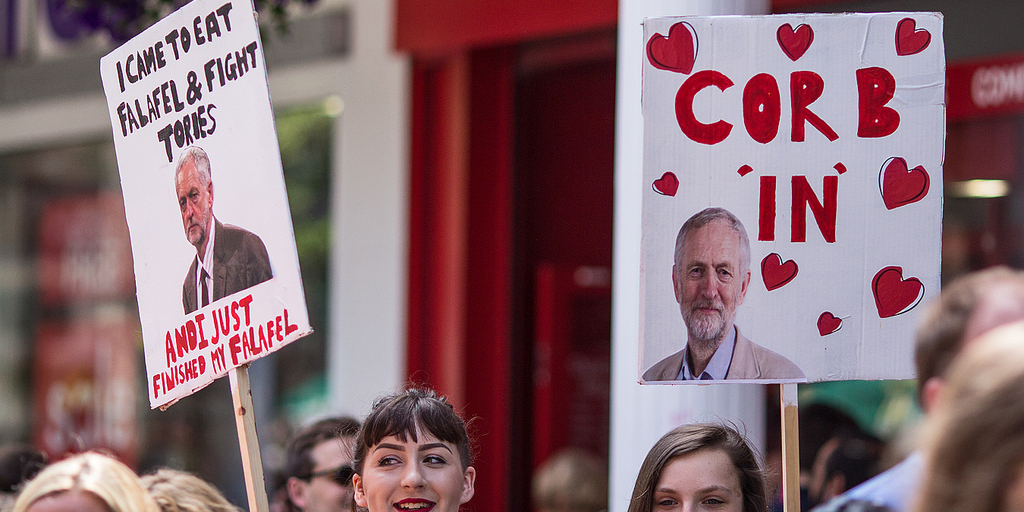Labour’s task
At first sight, the two main parties’ votes are mirror images of each other. The Conservatives ‘won’ with older people – 58 per cent of 60-69 year olds and 69 per cent of 70+. They also won 55 per cent...
At first sight, the two main parties’ votes are mirror images of each other. The Conservatives ‘won’ with older people – 58 per cent of 60-69 year olds and 69 per cent of 70+. They also won 55 per cent of people with GCSE or less qualifications, and there was a small pro Tory swing in seats with the biggest leave vote. By contrast, Labour did well with young, well educated people: 66 per cent of 18-20 year olds, 62 per cent of 20-24 year olds, 63 per cent of 25-29 year olds, 49 per cent of those with a degree or more – and Labour also did well in remain areas, increasing vote share by 12 per cent in the strongest remain voting seats
Strikingly, a recent poll for the TUC shows that 42 per cent of Labour’s vote came from people who had not supported the party in 2015 – and almost 4 out of 10 of those had not voted at all in that election – while the remainder divided fairly evenly between past voters on the right of centre (Tory and Ukip) and those on the left (Green and Lib Dem). Labour did not suffer as badly as widely predicted in pro Brexit areas, while simultaneously motivating urban, young, educated remainers. As Peter Kellner has pointed out, Bristol West and Knowsley were the two areas with the largest Labour vote but have such different demographic profiles that it is hard to find common threads.
Our work at BritainThinks, where we ran qualitative voter panels in six key seats, tells us that this coalition came together to vote Labour for three main reasons:
Firstly, policy – Much has been made of the tuition fee ‘offer’, and it does seem to have been at least partly responsible for galvanising young people in university towns. However, our campaign panel work shows that, although there was much that was popular on prompting in the Labour manifesto, very little of the detail really landed. It is likely that a broader, less specific pull towards greater spending on public services, especially the NHS mattered more.
Secondly, leadership always matters, and although this election challenged many conventional wisdoms, this was not one of them. Corbyn’s personal ratings transformed across all voters throughout the campaign, and as Theresa May struggled he appeared stronger. That said, although he may have his own chant now, our work suggests that Labour’s vote was driven by a coalition of people divided rather than united by their views of his leadership: some LOVED him to near-heroic proportion but other Labour voters definitely did not and often voted Labour despite rather than because of him.
Lastly, and arguably most important of all, it was about not being the Tories. Our post poll analysis is clear that the main reason that did unite this somewhat disparate group of voters was anti Tory sentiment. The return to two party politics made this a stark, binary choice and as the Tory star eclipsed so Labour’s rose. When we asked the Labour voters in our panel why they had voted as they did, the most common reason was to stop the Tories rather than a positive vote for Labour.
In the end, Labour did much better than expected but not nearly well enough. 56 seats behind the Tories with only a 2.0 swing – a bit better than in 1987 (1.7) and a bit worse than in 1992 (2.10) but a lot worse than in 1997 (10.2)
So Labour’s task is a challenging one. The party will have to hold this disparate coalition together (including uniting Corbynistas with people who voted despite him). But holding the coalition together will not be enough. Labour will also need to build on it – ensuring that those younger voters continue to turn out while also attracting older voters. And Labour cannot rely on the Conservatives underperforming as dramatically as they did in June.
In policy terms, the NHS is clearly a Labour strength with the potential to unite current voters and attract current party rejecters, but it will also be crucial for Labour to perform better on the economy – the ‘dog that didn’t bark’ in 2017, and the main barrier to voting Labour in 2015. Labour’s approach will be under much greater scrutiny in the next election if the polls remain tight. Expectations of getting a better deal on Brexit will also be crucial. GQRR’s post-election research for the TUC looked at an interesting subset of people who had considered, but rejected Labour. Their top reason for voting Conservative was the belief that they would be able to achieve the best Brexit deal.
That study also holds some important lessons on perceptions of the Labour brand. While Labour’s strengths were powerful: being on the side of ‘ordinary people’ and having ‘plans for the changes that Britain needs’, the party’s shortcomings were sobering: Labour was seen to lack competency, a reliable track record, and was not trusted to ‘stand up for Britain’, to ‘keep Britain safe’ and, most of all to run the economy. It will be hard to win without reassuring on these fundamentals.

